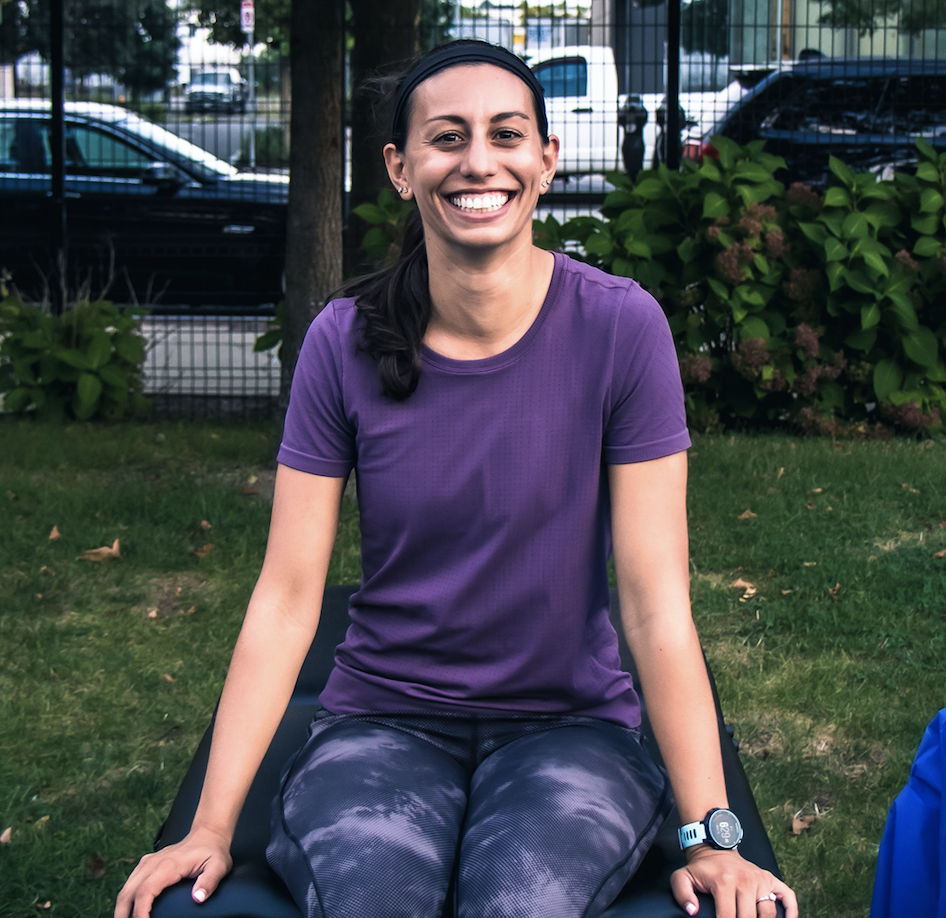The 4-Step Approach To Returning to Exercise After A C-Section

A cesarean section (c-section) is a common operation that women may have as a method of delivering a child/children. 1 in 3 births in the US is a c-section! This mode of delivery is performed during prolonged labor, in high-risk pregnancies, large babies, multiple babies, breech presentation, or in placenta previa to name a few. This can be a planned or a scheduled c-section, which is before labor OR it can happen during labor (unplanned c-section). Talking to your provider before you labor about why a cesarean may be necessary and what your options are in the mode of delivery is important, so you can be knowledgeable about your options and develop a birth plan. This article will further describe what a cesarean delivery entails and will help guide you through a 4 step process of returning to exercise after a c-section.
What Happens During A C-Section?
A c-section is a major abdomen surgery, where the incision will cut through multiple layers of skin and fascia, before getting to the amniotic sac and baby. This includes an incision into your lower abdominal muscles, which assists us in maintaining good stability and posture. Therefore, it is not always recognized how challenging it could be during the initial weeks after a c-section delivery. This mode of delivery is major surgery and it is important to take things slow as you heal. It is also imperative to know how to take care of your body after having a c-section and that every woman’s experience is different. We all have different recoveries. Here is a 4 step approach to returning to exercise after a c-section beyond the initial 6-weeks.
Step 1: Incision Care And Scar-Massage
During a c-section, the surgeon will make an incision through 7 layers of tissue to get to the baby. In the first 6 weeks and even beyond, there is a lot of healing that needs to be done both externally as well as internally. Minimizing the stress you place on this area is important for healing, including limiting heavy lifting and heavy activity, if possible. You may wear a belly binder in the early stages as needed to support your healing and provide some stability.
Scar tissue and adhesions can develop after this surgery, which is normal. To improve the mobility and function of the muscles around this area, it is important to perform self-soft tissue mobilizations or scar massage. It can feel numb or uncomfortable at first, so exposing this area to various materials including a washcloth, loofah, or various clothing textures may help to de-sensitize this area. This can take time, so feel free to progress as you feel comfortable. Below is a video of how to perform a scar massage. No matter when your c-section was, it is never too late to work on your incision and improve the mobility in the tissues surrounding it. This will only help to improve your low abdominal function as well as posture and strength.
Step 2: Breathing Exercises
Breathing exercises are going to help improve mobility to your rib cage, pelvis, abdominals, and back muscles from the inside out! It may be initiated right away and is a vital part of any postpartum mother’s recovery. Whether you are experiencing pain or not, it can aid in improving your pelvic health, core function, and posture. A good deep breathing routine for a c-section mother includes relaxing your shoulders and supporting your incision with a pillow or hands (especially in the beginning if there is tenderness or some discomfort). Start with a slow easy inhale filling your belly, sides, and back with air- do not force this or bear down into your stomach or pelvic floor as this could be uncomfortable and put too much stress on your abs and incision. As you exhale, think of “HAA” breathing as you empty your stomach, and rib cage of air. This can help you gently activate your core. This is not a forceful exhale, as our initial goal is to promote mobility and re-balance our system as we continue to heal. This can build a strong foundation as you prepare for your return to exercise. Check out this VIDEO to learn more.
Step 3: Restore Your CORE!
Once you have worked on incision massage and breath work, it is time to start with core re-training. Since you had surgery that cut through your abdominal muscles, strengthening your core and improving coordinating activation of these muscles in your lower abs will aid in your recovery and ability to lift heavier items, or humans. This can help balance out areas that are strong and work on other areas that may need some love. During pregnancy, the lower abs become weaker due to the pelvis changing and postural changes that occur as the baby grows. This puts them at a disadvantage postpartum to work the way we want them to, so restoring your core will improve the activation of muscles to improve posture, and strength, and decrease the risk of lower back or pelvic pain.
I always tell all of my postpartum clients that it is not the amount of exercise you do, but the intention with which you perform the exercises. When engaging your abs you can perform this while sitting, standing, or lying down. I recommend trying it lying down so you can feel what is happening. You may have to change your leg position to a comfortable place for you. Let’s do it together. Take a breath in, as you breathe out imagine you are hollowing out your belly. Drawing the belly button and surrounding area down towards the surface you are lying on is another great visualization. You may place a small towel roll under your lower back to assist in the activation. As you breathe out think of compressing your back into that towel roll without moving your pelvis!
Step 4: Rehab With A Physical Therapist
Most surgeries recommend going to physical therapy afterward for follow-up care and rehabilitation. This is so you can perform all of your activities pain-free and with confidence. Right now, after a c-section, it is not the standard of care to go to a Physical Therapist. This is despite the nature of what muscles and areas can be affected post-delivery. Therefore, advocate for yourself! Even if you have no pain, or issues, book a follow-up appointment with a PT. This can assist you in making sure you are performing the above 3 steps correctly for you. This will also assist in making caring for your growing child easier!
DO NOT WAIT. A common thing I see is mothers 3-4 years post-c-section getting help due to a variety of issues. These issues include back pain, leaking, pelvic pain, and pain with sex. This happens because they didn’t get the assistance and guidance in the first few months postpartum. I know it is just one more thing to add to your plate, but you could set yourself up to be the best mother you could be for your family by taking care of your body. This will allow you to take care of your little ones! You got this.
Resources:
- Caughey AB, Cahill AG, Guise J-M, Rouse DJ. Safe prevention of the primary cesarean delivery. Am J Obstet Gynecol. 2014;123(3):693-711. doi:10.1016/j.ajog.2014.01.026
- American College of Obstetricians and Gynecologists. Cesarean birth. Updated May 2018 https://www.acog.org/womens-health/faqs/cesarean-birth
- Bordoni, B & Zanier, E. Skin, fascias, and scars: symptoms and systemic connections. Journal of Multidisciplinary Healthcare. Rehabilitation Cardiology Instite of Hospitalization and Care. 2013

Juliana is a Women's health and Orthopedic Doctor of Physical Therapy. She is the founder of Pacer Physical Therapy providing both in-home and virtual care to new moms and runners. She started Pacer PT to empower pregnant and postpartum moms who want to get strong through education, exercise, and healthy habits. Juliana believes that all women should have an equal opportunity to balance, family, work, and fitness so they can be healthy and active with their families.








